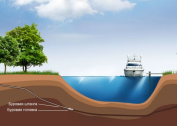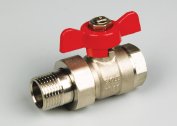The rules for the technical operation of systems and structures for municipal water supply and sanitation are a normative legislative document that is the basis of the work of enterprises engaged in water supply to the population and organizations. The rules clearly indicate what water supply organizations should do, what responsibilities they have, how the work and regime are arranged, how quickly they must respond to emergency and non-standard situations.
General provisions for the operation of water supply and sanitation
 Since the rules of technical operation of water supply and sanitation systems are a legislative act, its sections are the main points in the organization of water supply and sewer networks in terms of their operation and maintenance. The first paragraph of the rules is the purpose and task of water supply and sanitation enterprises.
Since the rules of technical operation of water supply and sanitation systems are a legislative act, its sections are the main points in the organization of water supply and sewer networks in terms of their operation and maintenance. The first paragraph of the rules is the purpose and task of water supply and sanitation enterprises.
It mentions several documents that are the main organization of work:
- SNiP II-32-74 - set of rules for the protection of surface waters from pollution by wastewater;
- instructions for receiving industrial effluents into the city sewer;
- GOST 2874-78, which defines the parameters of water quality.
Based on these documents, the work of the enterprise is compiled. In order for her to be organized competently, we need:
- highly qualified specialists;
- control, accounting and analysis of working conditions;
- a clear organization of rational modes of operation and water supply, and sewerage;
- automation and mechanization of production cycles;
- the organization of the conditions for the prevention, inspection and repair of networks, equipment;
- study and registration of the causes of emergency situations.
The complex of ongoing activities is looped at two main points: technical personnel and equipment. With the employees of the organization, training sessions are held all the time, which several times mention the rules of work of each employee individually and the team as a whole.
In addition, each employee periodically undergoes advanced training outside the organization. To do this, courses and schools are organized in which they provide information on new developments in terms of installed equipment or water supply and sanitation technologies.
All employees and employees strictly adhere to the above rules. Anyone who has not fulfilled the conditions is subject to strict administrative measures. There are frequent cases when violators were held criminally liable.
Dispatching service
The purpose of the dispatch service clearly describes what dispatchers should do, what authority they are given.
- Manage networks by maintaining preset modes.
- Supervise emergency, repair and maintenance work.
- Accept applications from the public or organizations.
- Provide the maximum amount of water for large fires.
The structure of the dispatching service depends on the complexity of the water supply and sewer networks, on their performance, length and complexity of technological processes. The dispatch service is subordinate to the chief engineer of the enterprise, but in operational terms it is subordinate to the dispatch service of a higher organization.
The duty dispatcher provides technical guidance for the plumbing and sewage system. He can make inquiries on the technical condition of the equipment, manage the teams that travel on applications.He is also responsible for reporting shift duty, fills out the required journals, keeps in touch with all services of the Ministry of Emergencies. If necessary, his duties include giving information to local authorities.
In the office you must have:
- schedules and modes of water supply and sewage;
- regulations for maintenance of water supply systems and sewer networks;
- instructions and rules;
- schemes of systems and types of equipment;
- telephone guide list: home and mobile;
- list of telephone numbers of city services.
Dispatchers work according to the established and approved schedule. They are considered operational workers in whose hands the entire work of water supply and sewage systems. The powers of these employees are large - up to disconnecting networks, if there are reasons for this. They do not need orders; all decisions are made independently on the basis of instructions and rules.
Sanitary Protection Zones
 The task of the WSS is to make plumbing and sewage systems safe for humans.
The task of the WSS is to make plumbing and sewage systems safe for humans.
-
- In all settlements, sanitary zones must be established.
- They are agreed with the local bodies of the State Sanitary Inspection and are developed on the basis of SNiP II-31-74.
- Approved by local authorities.
- Responsible for the supervision of the zones are appointed by order of the head of the organization engaged in water supply and sanitation.
- In the first sanitary zone it is forbidden to build and live for people, to discharge drains, grazing and watering of cattle, bathing are forbidden. You can’t fish, wash clothes, etc. Such areas are protected.
- The second zone is the territory in which construction can be carried out, but agreed with the State Sanitary Service. The main requirement is not to reduce the quality and quantity of sources that are used for water supply. The zone is patrolled by security guards.
If the source of water supply in the second zone is the river, they tighten control over the implementation of measures related to the prevention of pollution from river transport. This is a complex event that is consistent with all city services.
Water intake facilities
 The main objectives of water intake facilities are to ensure uninterrupted water supply to the water supply system. They also analyze and record liquids, carry out repair and preventive operations. All events are recorded in special magazines.
The main objectives of water intake facilities are to ensure uninterrupted water supply to the water supply system. They also analyze and record liquids, carry out repair and preventive operations. All events are recorded in special magazines.
If for some reason the water quality has changed for the worse, the dispatchers should notify the authorities of the district or city about this.
Much attention is paid to the treatment facilities of the water supply system. They provide the required degree of purification of the water supplied to the water supply. Different filtering methods are used here, different types of technologies, equipment and substances are used: drum-type strainers, reagent workshops, sedimentation tanks and clarifiers, disinfectants, iron removers and other equipment.



